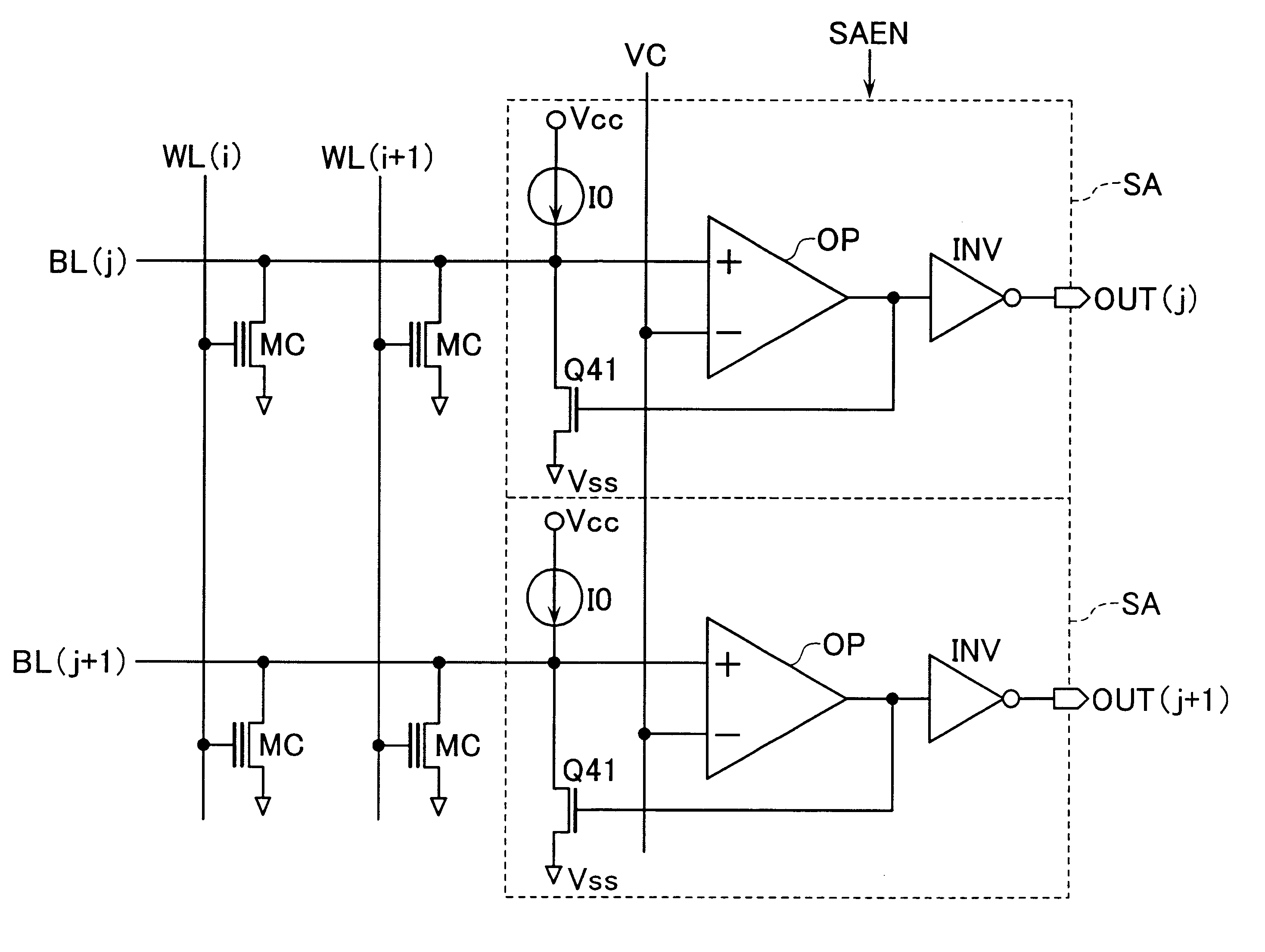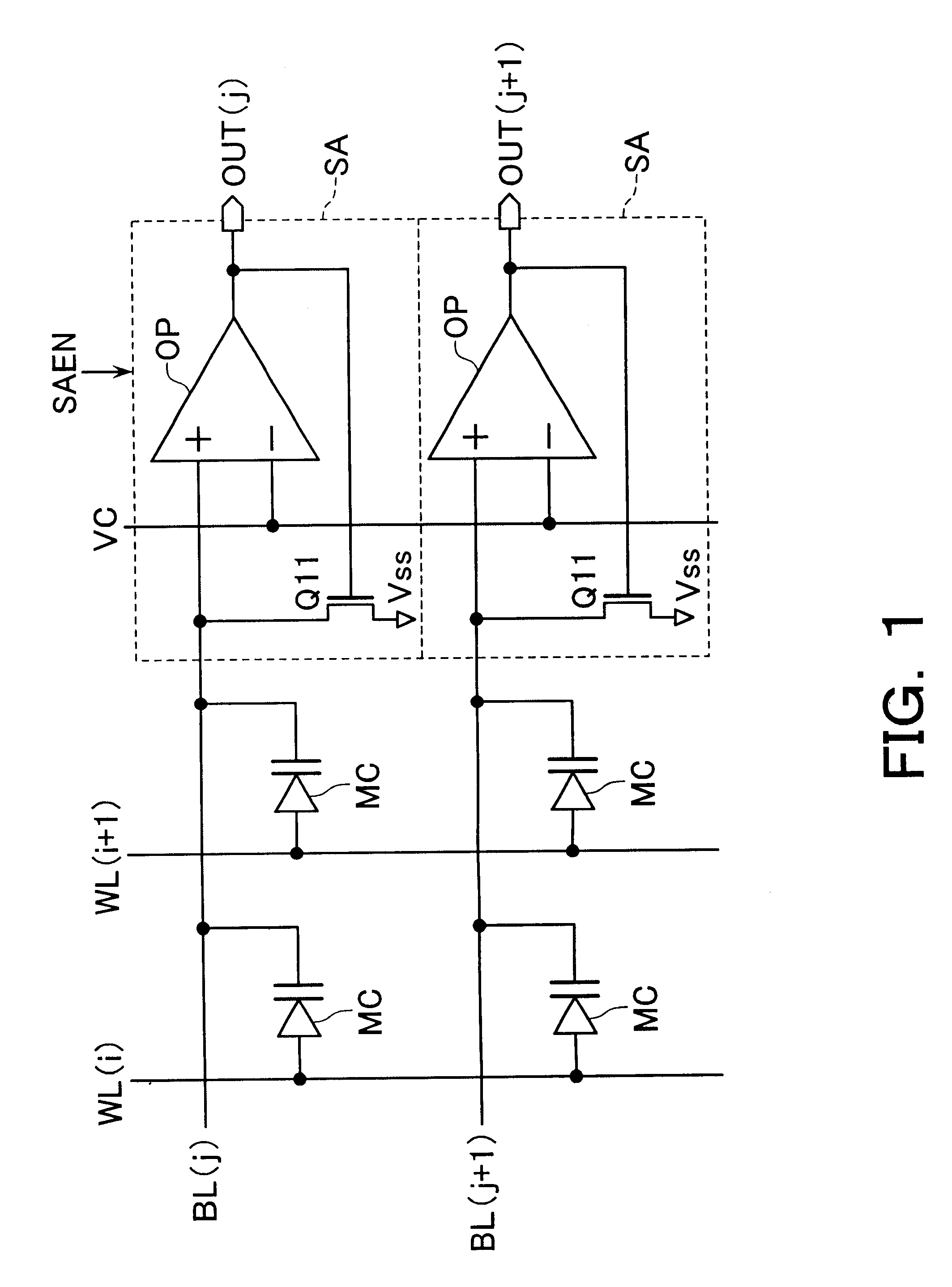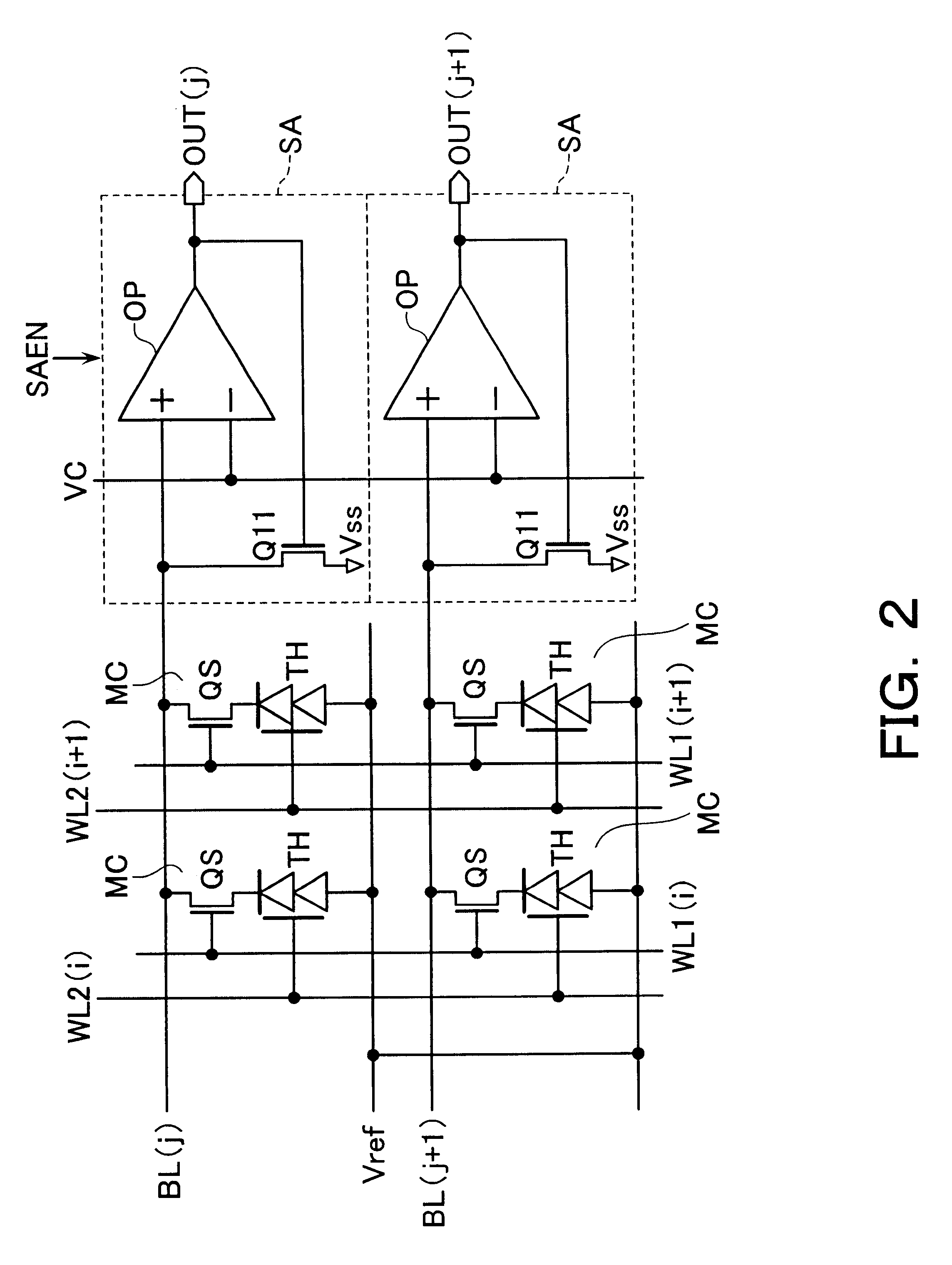Magnetoresistive memory device
a magnetic memory and memory device technology, applied in semiconductor devices, digital storage, instruments, etc., can solve the problems of circuitry suffering from high threshold voltage (and thus the cell's drain) to potentially go high, and high risk of writing errors
- Summary
- Abstract
- Description
- Claims
- Application Information
AI Technical Summary
Problems solved by technology
Method used
Image
Examples
Embodiment Construction
A sense amplifier scheme incorporating the principles of this invention is such that an operational amplifier and clamping circuit are used to enable execution of control for forcing the bit line of interest to stay at a constant or "fixed" potential level without regard to data being presently read. Accordingly, unlike the prior art schemes for determination of a bit-line clamp potential through ratio operations in the way stated in the introductory part of the description, it is possible to suppress or minimize stresses of current-driven memory cells to thereby obtain much increased read-out margins.
Memory cells to which the sense amplifiers embodying this invention are the so-called current-driven memory cells, typically including (a) memory cells of the type functioning to flow out or "push" a current toward a bit line(s) in a way conformity with data when selection, and (b) cells of the type acting to draw thereinto or "pull in" a current in accordance with data when selected.
S...
PUM
 Login to View More
Login to View More Abstract
Description
Claims
Application Information
 Login to View More
Login to View More - R&D
- Intellectual Property
- Life Sciences
- Materials
- Tech Scout
- Unparalleled Data Quality
- Higher Quality Content
- 60% Fewer Hallucinations
Browse by: Latest US Patents, China's latest patents, Technical Efficacy Thesaurus, Application Domain, Technology Topic, Popular Technical Reports.
© 2025 PatSnap. All rights reserved.Legal|Privacy policy|Modern Slavery Act Transparency Statement|Sitemap|About US| Contact US: help@patsnap.com



